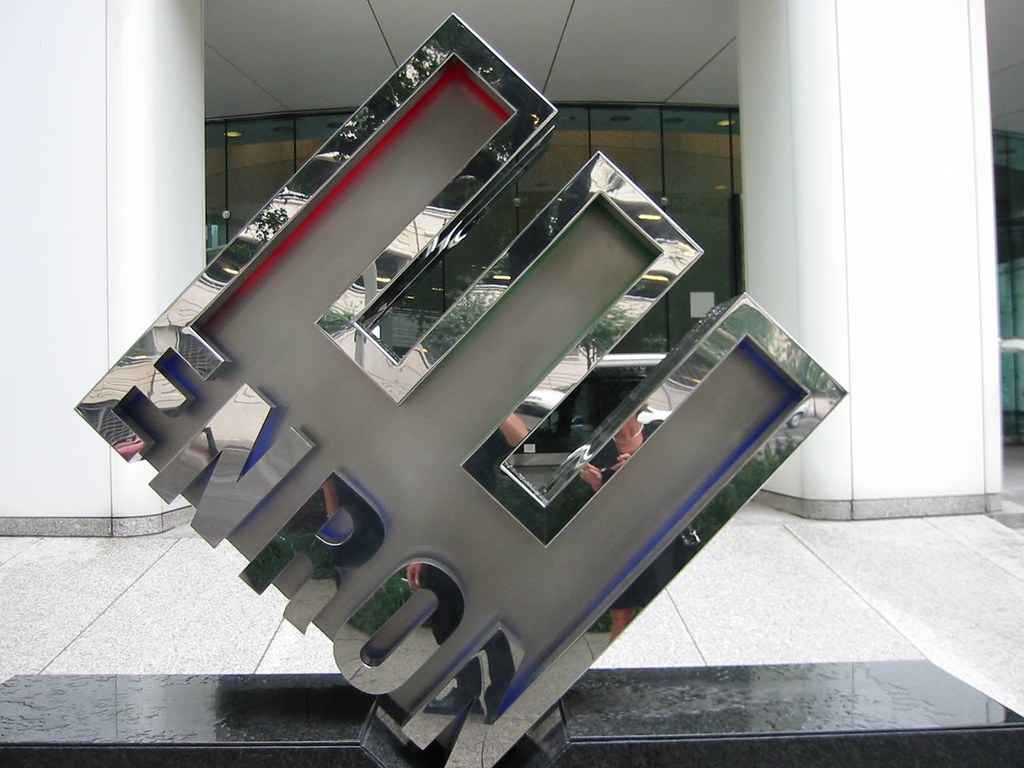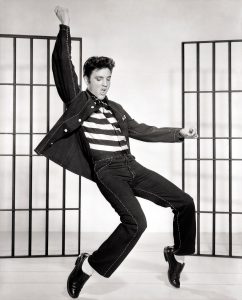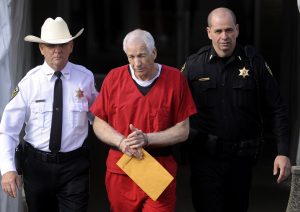The year is 2001. The Enron Corporation lost everything, including its investments, its stock value, and most important of all, its reputation. The company was responsible for trading energy derivative contracts and acting as an intermediary between customers and natural gas suppliers in the United States. They behaved as if they were on top of the world without any hesitation, but they had committed fraud against every investor they had. Their goal was to expand their fraud further and get even more money. But there was one person who believed what they were doing was wrong. She thought it was unfair to those who invested in the company whose funds would be lost. Despite the risk to her life and career, this person demonstrated that justice can be found and that we should always seek out the truth for the benefit of others. That person was Sherron Watkins.1

Sherron Watkins graduated from the University of Texas and completed her Certified Public Accountant certification. Her career had allowed her to work in numerous corporations throughout Texas and New York before finally landing at Enron Corporation in Houston, Texas where she took the position of Vice President of Corporate Development. As a member of one of the three largest accounting firms in Houston, she was looking forward to her new job. For anyone, working for these companies would be a dream come true since their ability to provide a wide range of services to their clients made them well-known throughout the country, especially Enron.2
In 1995, Enron became successful, having obtained the authorization to handle 25% of the United States gas and power transactions. They recruited the best MBA’s in the country to handle the responsibility. Watkins noticed the rapid success Enron was having, and saw it as a positive for the company. All the employees, and especially the executives, were generating huge bonuses from the business they were doing. Nevertheless, Sherron was left wondering how the budgets, business proposals, and profits were being approved so quickly.3
Then Enron’s profit started escalating faster than ever. Watkins questioned how it was happening so quickly, because normally for a company to see such profits, it would take more than a couple of months, since she knew from her previous employment that it was technically impossible to do that much business so quickly. She decided to investigate and began asking her co-workers questions, but everyone brushed her off and said they didn’t know what she was talking about. With that response, Watkins became suspicious about how Enron was doing so well. As a result, she decided to take matters into her own hands and began to observe everyone who worked for Enron, including Kenneth Lay, the chairman of Enron, and Jeffery Skilling, the CEO at the time of the scandal.4
Watkins noted that Enron was disbursing $60 million in bonuses to 500 employees, with executives receiving significantly higher amounts than their usual compensation. Additionally, she observed that the business proposals she reviewed appeared illogical or lacked substantial benefits. Despite showing profits to investors, Enron continually sought additional funding without demonstrating any actual profit. Upon recognizing these actions, Watkins drew on her previous experiences with other companies and discerned a misalignment between their attitudes and actions, and proper business ethics. As a result, she felt compelled to speak out against these unethical practices and raise awareness about the need for transparency and integrity in the business world.5

Sherron Watkins observed that Kenneth Lay, who was the Executive Officer and Chairman of Enron at the time, would force Enron employees to book plane tickets through his sister’s agency, saying that it could get the tickets cheaper. But Watkins found that the airline would either lose her bags or leave her stranded during travel in third-world countries when she used that agency. Watkins started to wonder why the company would use such a budget airline for such important business meetings and events. Was Lay just trying to help his sister? Was it cheaper for them? Or were they trying to somehow make a profit out of it? Watkins began to investigate the company’s finances and was willing to get to the bottom of it.6
Continuing her investigation, Watkins noticed problems in the finances. They did not add up to her calculations. She decided to speak to Enron’s Chief Financial Officer Andy Fastow, regarding Kenneth Lay’s conduct. However, she was not prepared for what she heard. He made excuses for Lay, saying that he was meeting Enron’s expectations; and Fastow never returned to the subject. Watkins was confused as to how Lay was meeting the company’s expectations. How was everything he was doing right? Watkins began to consider taking action.7
Watkins was more aware of the actions being carried out by Enron and she recognized the ethical wrongdoing and felt a sense of obligation to take action. She was also aware that doing so could have severe consequences for her own life and security. Being the primary earner in her household, she understood that if things went awry, she would become a target and her life would be jeopardized simply for desiring to do what was right. Watkins contemplated her actions and questioned whether it was truly the correct course of action. Was it worth the potential ramifications? After careful contemplation over the course of several days, she ultimately decided to compose a letter addressed to Kenneth Lay, expressing her concerns regarding the moral integrity of Enron’s financial practices.8

After thinking about her choice for a long time, she finally decided to send the letter to Kenneth Lay. Moreover, that letter would alter the course of Sherron’s life and Enron’s future. She knew that she would be sacrificing her career and her executive position, as well as endangering her family by possibly never being able to find another job. She might even have her life threatened, because of her stance against Enron’s acts against the public’s trust. Because of this, she was cautious, concerned, and even terrified. Soon after sending the letter, Kenneth Lay called her to his office. In that transition, Watkins thought about all the different conversations that could take place between them and was open to a positive or negative response from Lay. Watkins finally stepped into his office and took her seat in front of him. They discussed the company’s finances, and he asked her opinion on how Enron could move forward and what she thought should be the next step concerning Enron’s financial decisions. She expressed her opinion and left. She felt an uneasy feeling while walking away from Kenneth Lay’s office. She didn’t know what the outcome was going to be.9
In August of 2001, Enron declared it would be losing 638 million dollars and that it would also lose more money until December of 2001. Enron filed for bankruptcy, being the biggest bankruptcy filing in the United States.10 The CEO was charged with conspiracy, securities fraud, false statements, and insider trading, and he was sentenced to 24 years in federal prison. Kenneth Lay was found guilty of conspiracy and securities fraud, which are felony activities that involve using other people’s assets to make a personal profit. He was also found guilty of making false statements and for insider trading, and was sentenced to 45 years in prison. But Kenneth Lay passed away in 2006 from a heart attack.11
Sherron Watkins was the key to the whole investigation and was an instrumental part in providing details of Enron’s crimes. She influenced the whole course of the corporate world because of how she sought ethics and justice in business. She believed there should be justice for those who lost their money from trusting a company that just took their money for granted, and that they should be able to maintain confidence in a publicly traded company. Sherron Watkins was awarded the Person of the Year by Time Magazine in 2002. She later wrote a book about the Scandal surrounding Enron.12 Later, the University of North Carolina appointed Watkins to teach Corporate Governance Leadership and Business Ethics at Texas State University.13
- Stephen Arbogast, “’Whistleblowing’ before Imploding in Accounting Scandals,” University of St. Thomas, (December 4 2002): 1. ↵
- Patricia Witt, “Sherron Watkins,” Southwestern University (December 6): 6. ↵
- Troy Segal, “Enron Scandal: The Fall of a Wall Street Darling,” Investopedia, (April 5, 2023): 7. ↵
- Andrew Nguyen, “Fraud within the Enron Corporation: The Enron Scandal of 2002,” Touchstone 40 (January 1, 2021): 1. ↵
- Dick Carozza, “Interview with Sherron Watkins,” Fraud Magazine (February 2007): 2. ↵
- Dick Carozza, “Interview with Sherron Watkins,” Fraud Magazine (February 2007): 3. ↵
- Stephen Arbogast, “’Whistleblowing’ before Imploding in Accounting Scandals,” University of St. Thomas, (December 4 2002): 3. ↵
- Dick Carozza, “Interview with Sherron Watkins,” Fraud Magazine (February 2007): 7. ↵
- Dick Carozza, “Interview with Sherron Watkins,” Fraud Magazine (February 2007): 2. ↵
- Cruver Brian, Anatomy of Greed: Telling the Unshredded Truth from Inside Enron (Basic Books, 2003), 270-277. ↵
- Thomas William, “The Rise and Fall of Enron,” Journal of Accountancy (April 1, 2002,): 12. ↵
- Patricia Witt, “Sherron Watkins,” Southwestern University (December 6): 6-6. ↵
- Patricia Witt, “Sherron Watkins,” Southwestern University (December 6): 6. ↵



6 comments
Rhys Williams
I found your account of Sherron Watkins’ investigation into Enron’s escalating profits both riveting and insightful. The quote where Watkins questions the sudden surge in profits and decides to take matters into her own hands underscores her determination and skepticism, highlighting the crucial role she played in uncovering the scandal.
Yuliana
This was very informative and interesting article with interesting points and thought out exceptionally
Alanna
Mind blown!!! I had no idea this was happening, this was a very informative article done by a brilliant author.
baguirre6
This story really captivates the thought process of Watkins and the scandal . I really like how it’s very clear to understand the importance of the scandal.
acardenascelay
Very well written! Especially the explanation on Watkins thought process and how she started to realize that things were not adding up. The explanation on the whole scandal was very clear and understanding, as well as clear to the point, very good job!
janderson36
Reading this makes me want to learn more about Sherron Watkins as a person.